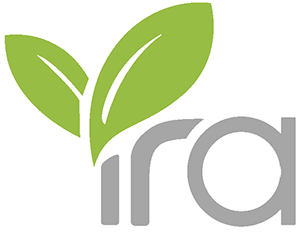
News

$134Mn investment in rubber cultivation in north-eastern India and West Bengal by tire makers
Efforts are underway to ensure that India’s north-eastern region, comprising the seven “sister states” states-the contiguous states of Arunachal Pradesh, Assam, Meghalaya, Manipur, Mizoram, Nagaland and Tripura - will likely contribute nearly one-third of the country’s total natural rubber (NR) production soon, in order to meet the shortfall in supply for the commodity in the rubber industry. The region, along with West Bengal, currently produces around 150,000 tonnes of NR from the existing 200,000 hectares of plantation and is likely to produce 600,000 tonnes by 2032,
The initiative is aimed at reducing the volume of NR imports into India, which rose to a three-year high last fiscal. Against the country’s consumption of 1.23 million tonnes of NR in 2021-22, domestic production stood at 770,000 tonnes. The Rubber Board estimates that India’s NR demand will rise to 2 million tonnes by 2030. During the last fiscal, the country imported 546,000 tonnes of NR, mainly from Indonesia, Vietnam, Thailand and Cote d'Ivoire.
Under a project launched by the Automotive Tyre Manufacturers’ Association (ATMA) in collaboration with country’s Rubber Board, nearly 200,000 additional hectares in the north-eastern states and the state of West Bengal will be brought under rubber plantation over a period of five years, at an investment of Rs. 1,100 crore ($ 134.07 million). Almost 16.5 million rubber plants have successfully been planted in the region so far
Once the objective of developing an additional 200,000 hectares under the project is achieved, it is estimated that the share of the north-eastern states in the country’s total NR production will increase from the current 18 percent to 32 percent of total production. The southern state of Kerala’s is India’s major rubber-growing state.
The availability of land and suitable agro-climatic conditions make the north-eastern region a favourable destination for rubber cultivation. Of the states under consideration, the largest area under plantation will be in Assam, at almost 100,000 hectares.
At a press conference in Guwahati, Assam, on November 4, 2022, Dr. K. N. Raghavan, Executive Director, Rubber Board, explained that work on the plantations in north-eastern India started in 2021 and close to 30,000 hectares have already been brought under rubber cultivation, primarily in Assam and Tripura. The Rubber Board and ATMA plan to add another 50,000 hectares in 2023 and 60,000 hectares each in 2024 and 2025, for a total of the targeted 200,000 hectares.
Dr. K. N. Raghavan pointed out that raw material security has been determined to be an essential area of importance for any country in the new world order. Given the importance of such strategic raw material, he urged India to focus on increasing domestic NR production so as to become self-reliant and avoid dependence on imports.
Satish Sharma, Chairman of ATMA, noted that there is great potential in India’s north-eastern region, calling it a “goldmine”. He explained that “with a slight nudge from the government”, the country’s four big tire manufacturers- who together account for nearly 90 percent of the total market-have come together and invested in the project.
Apollo Tyres, CEAT, JK Tyre and MRF have together pledged Rs. 1,100 crore ($133.9 million) over the next five years as a "business investment" to increase rubber plantation in the north-eastern region, according to Mr. Sharma.
He pointed out that this this is a first of its kind project in the world where the consuming industry is working in collaboration with government agencies to boost NR production.
He said that while the four tire majors have invested in the project, the NR produced under this scheme will not be used only by the country’s tire sector, but will instead be used by other consuming segments of India’s rubber industry.
The country produces 775,000 tonnes of NR per year, of which 73 percent is consumed by the automotive tire sector, with the rest being used by cycle manufacturers, conveyor belts manufacturers and manufacturers of balloons, condoms and footwear, amongst others.
The project involved the planting of 5.5 million planting materials successfully transported from Kerala to the north-east over the past year, despite formidable logistical challenges.
Dr. K. N. Raghavan said the project will also improve the socio-economic conditions of the 250,000 rubber farmers with land holdings of less than an acre. He said that the Rubber Board and ATMA had approached the village heads, who are identifying such lands for the project. A major component of the project is training and skill development, which involves creating infrastructure for training facilities, and conducting training programs for farmers and tappers on best practices and technologies.
Read more at INDIAN/INTERNATIONAL RUBBER JOURNAL
Reference : INDIAN/INTERNATIONAL RUBBER JOURNAL
Latest News

INTERNATIONAL RUBBER ASSOCIATION
SECRETARIAT
THE THAI RUBBER ASSOCIATION
45, 47 Chotivithayakul 3 Road, Hatyai, Songkhla 90110, Thailand
+66 74 429311, +66 74 429011-2
+66 74 429312
secretariat@irainfo.org





